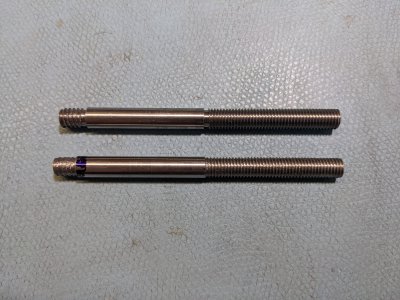- Joined
- Oct 19, 2020
- Messages
- 158
My scratch pass was right on 20. I found it too much of a coincidence that I measured 40 (2x what I wanted) when I stopped the operation. Would I get 1/2 a thread advance if I engaged the half nut one position late? I well could have engaged the nut just before the mark one time and just after the mark the next since my thread counter would not let me engage exactly on the mark.if it's 40tpi you're splitting the thread. I only ever use the same mark on the threading dial. It's slower but simpler.


